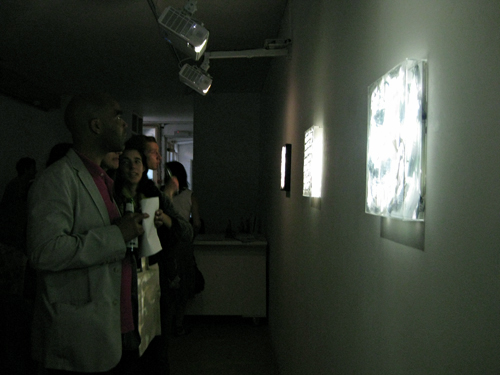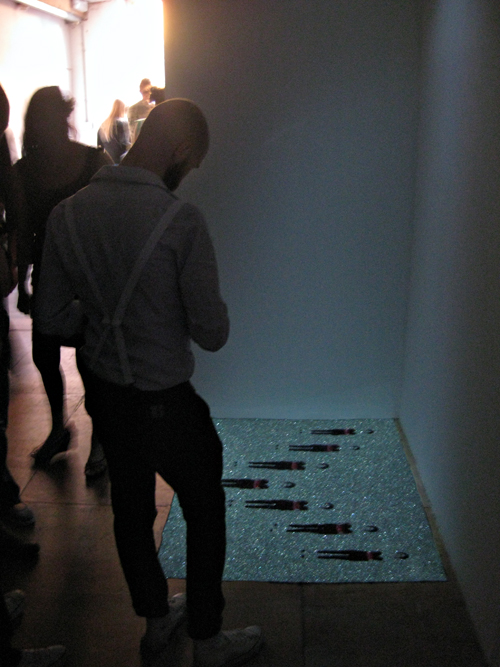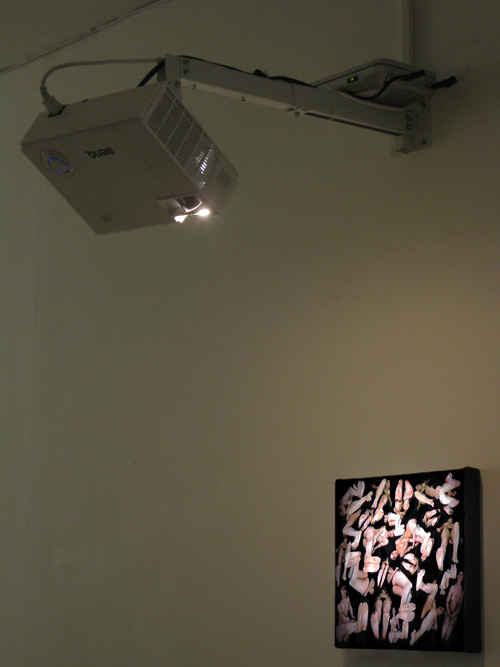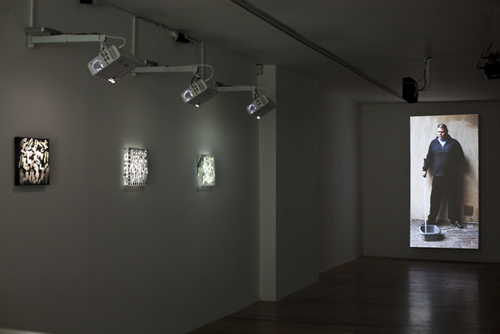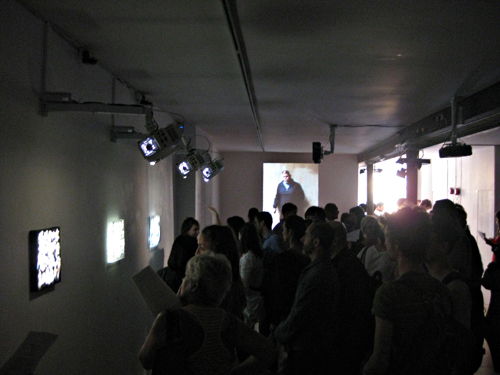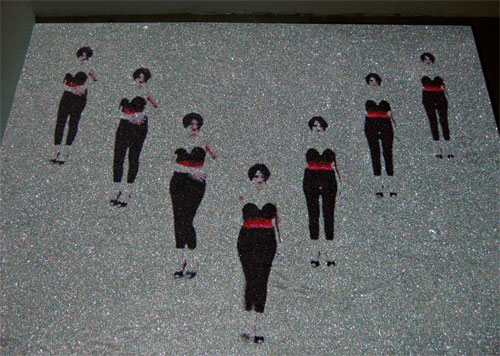London
E2 9DG
E: office@goodengallery.com
Physicology celebrates moving image as a non- filmic phenomenon. One that isn’t rooted in the narrative or governed by conventional vehicles of meaning that are ‘told’. Yael Schmidt, Sean Branagan and Cecile Wesolowski have created work that provides an encounter more tangible. None of this work uses a monitor (in this case a creative dead-end) and none of this work is projected onto the customary screen - allowing post-production decisions to include more than just editing the film. The works are finished in the real world; they occupy actual space and have a physicality that engages our wider perceptions.
Cecile Wesolowski has a diverse practice. Previously seen here in 2009 as part of the ‘A One Night Stand with...’ programme where she presented ‘I Play Bach’ - a video of a performance that was projected onto scrunched up silver foil, creating ‘real space’ distortions to the image. This time we are showing her piece ‘60bpm’ a visually and aurally rhythmic and repetitive piece which is projected from the ceiling onto black sand on the floor, where image and material merge so that the precision and definition of the image is dissolved and blended within the granules of sand.
Sean Branagan’s work forces a collision and synthesis of different elements from painting, sculpture, architecture and moving image. Projectors positioned on brackets, hovering just above and in front of the small ‘units’ that hold the image are visible and integral to the work - a decision that over-rides filmic convention and reinforces the use of light (from the projector) as a formal element within the ‘painting’; rendering it a material in its own right, a substance equal to paint. Light connects with the painted surface in different ways in these three pieces: in ‘Peepshow' the dabs of paint on the transparent surface function like mini, floating screens that partially catch the image or allow it to fall behind the ‘picture plane’. In ‘Where the Sun is Silent’, the impasto paint provides a location on the canvas within which each little sub-image ‘performs'.
Branagan’s piece, ‘Smoking’, shows a light-ridden naked woman locked into her pose, staring out of a black, void-like environment. She holds a gun in her left hand and a cigarette in her right hand, but the gun isn’t aimed at anyone, and she never smokes the cigarette; it continually burns down and reforms. It is one in a series of pieces where figures inhabit a slice of space and time that we can’t quite figure out. The glitch in comprehension is intriguing; as if the work needs to ‘fail’ (by one set of rules) just enough for us to experience the ‘double take’ that transports us to view using a different set of rules
‘Transporter’ is a series of works by Yael Schmidt of life-size figures engaged in private activities such as sleeping, bathing or daydreaming. Projected onto white sculptural forms (plinths on the floor or wall mounted) anchor the image within a specific shape and area. The interesting thing about ‘Bath’ is the way that the sculptural form or ‘anchor’ for the image resembles the shape of the main object from the film (the bath). This literal complement creates a physicality which is momentarily lost each time the image fades away leaving just the box on the wall, which then becomes an object in its own right. These duel states that the work exists on, are connected to the artist’s interest in the fragile ethereal nature of projections and how sculptural, physical objects can create transient openings in this world, to link with another ‘reality’ or experience.
In his own world and unaware of his audience, ‘Whistling Man’, also by Yael Schmidt, is a video performance locked onto one of the sculptural forms. In a narrative sense the tune has a beginning and an end, but de-contextualised and encapsulated on and within the ‘anchor’, which protrudes forwards towards us, the work becomes an object rather than a predominantly filmic experience.
Text by Della Gooden
